The Beautiful Alternatives to Boxwood
A follow up to my Sunday post about the dreaded Box Blight & Caterpillar.
There are all number of diseases and problems for the poor old Boxwood now. It’s such a crying shame as it’s been a stalwart in the garden for centuries, creating elegant structure and form for both summer and winter. It’s lush, jolly green leaves are like no other. I’ve fought hard to save my plants. But with climate change, insect invasions from the east and potentially dangerous and time-consuming treatments, I think it might be time for me to throw in the towel, admit defeat and look at the alternatives.
On a recent visit to the beautiful nursery and gardens of Architectural Plants, based in Pulborough, West Sussex, I was introduced to some quite amazing species that still give you lush green growth and the ability to clip them into pretty sculptural shapes.
Below is a fascinating list of some of the best replacements for Buxus as compiled by Architectural Plants. But first, here’s a little about the company:

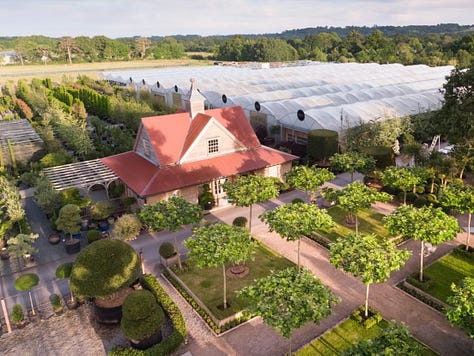

Angus White founded Architectural Plants in 1989 and launched to an unsuspecting public the following spring. I remember visiting the Nuthurst nursery with my Mr C quite a few times back in the late nineties and early noughties and being totally blown away. I met Angus briefly and we also bought some rather unusual and other-worldly specimens and my first book on topiary.
In 2004, Chichester College took over the running of Brinsbury Horticultural College. They heard Angus was looking for land and offered him over 30 acres next door. In February 2015, he moved the whole business to the new site. I remember being decidedly miffed that they were moving from Nuthurst. However, Mr C and I went to visit the new nursery when they first opened. It was enormous and I knew they would turn it into an oasis! We bought an Indian Silk Tree, Robinia Tomentosa and a Dicksonia Antarctica for our garden in Surrey.
Angus was looking for a succession plan. Guy Watts had worked for him from the age of 14 in his school and university holidays and then full time until he decided to row across the Indian Ocean, as you do. He came back to run Architectural Plants in 2016 and took full ownership in 2021. If you ever get the chance to visit then please do. It’s one of the most astonishingly beautiful nurseries I have ever visited and the whole team are super friendly.
The Alternatives to Box
1. LONICERA NITIDA ‘ELEGANS’ (SHRUBBY HONEYSUCKLE)
If you’re looking for rapid results, this fast-growing alternative is worth considering. This is a small leaved shrub, originally from China where it grows along the streams and ditches of Yunnan and Sichuan provinces. Long since established as a firm favourite in gardens it has small rounded leaves. Often wider than tall this shrub can reach 1.5m to 1.8m tall with a fairly close habit so that when clipped, it can become very dense, thick and lush.
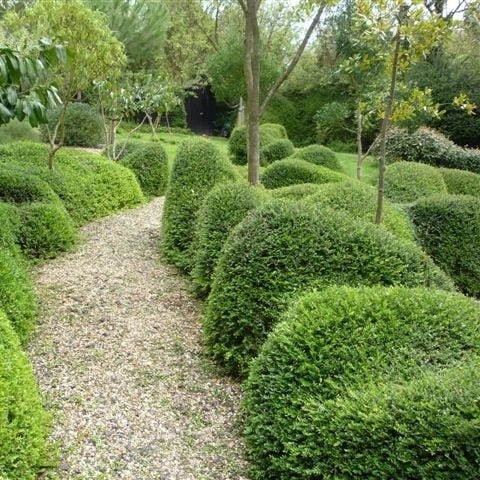
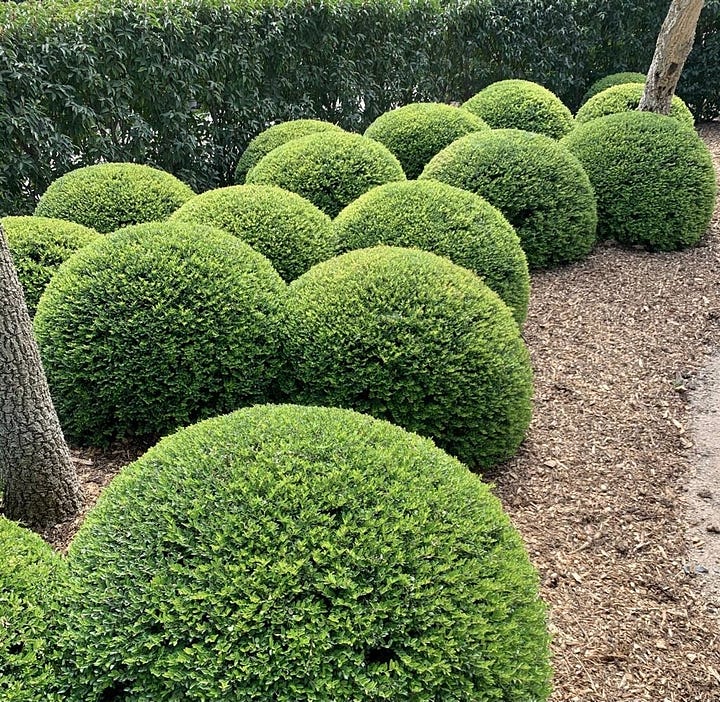
Once established it proves to be extremely robust. In the right conditions it’s quite unstoppable. It will grow from a small plant to a larger shape quite quickly but will then need very regular clipping to avoid looking shaggy and spikey. Should you ever need to cut back hard, healthy plants will return faithfully.
The flowers are small, creamy and appear in mid to late spring, but as with all topiary, the more the plant is pruned, the greater the chances that the flowers will be cut off.

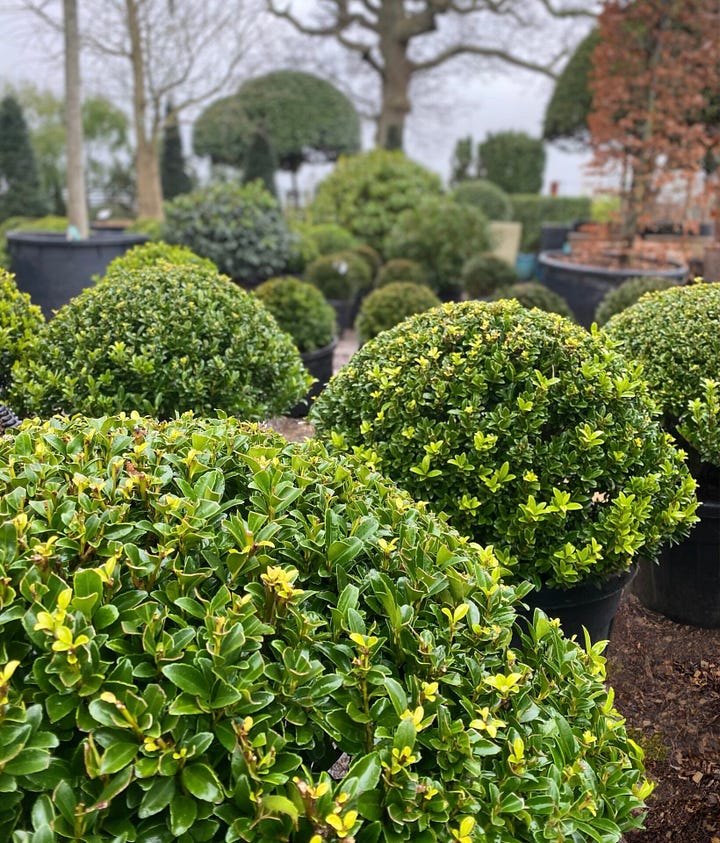
2. ILEX CRENATA (BOX LEAVED HOLLY)
This is a group of small leaved shrubs from the far east that make really good subjects for topiary. Classic, slow growing Ilex crenata has been imported for a long time as Niwaki as it is perfect for the delicacy needed. An elegant, solid and sumptuous form.
3. ILEX MAXIMOWICZIANA ‘KANEHIRAE’
Recently we have been using Ilex maximowicziana balls, (fantastic name, but a bit of a mouthful, so usually known as ‘maxi balls.”) The leaves are a tad larger and it seems to be a bit faster growing and more robust than Ilex crenata.
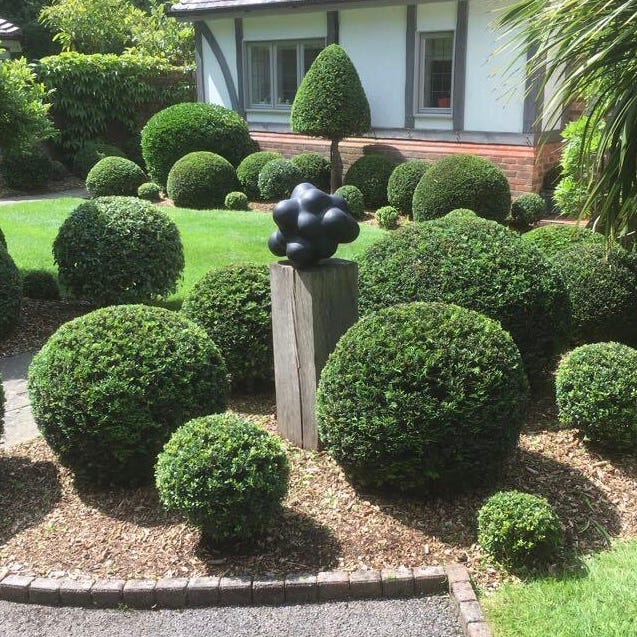
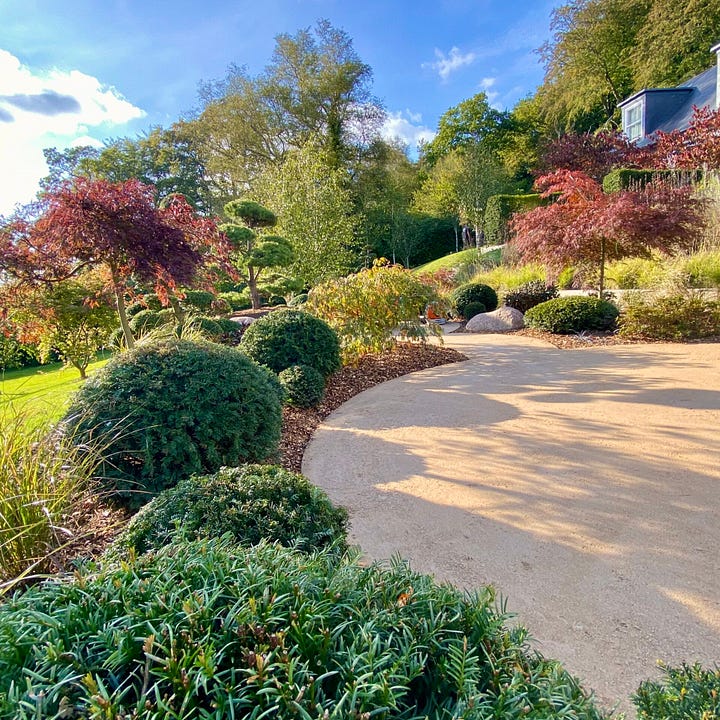
4. TAXUS BACCATA (YEW)
The ‘poshest’. From ancient times yew has thrived in the UK. Hardy and evergreen it grows on hot dry hillsides and in shady churchyards. The flat, needle-like leaves are small and dense so the plant clips beautifully developing into lush, thick and long-lived topiary, hedges etc. A low maintenance choice that needs clipping just twice a year.
Taxus baccata will also provide delightful pops of colour amongst its rich leaves. It has both male and female plants, the male flowers are small and yellow, the female flowers can develop lucent red berries each containing a single seed.
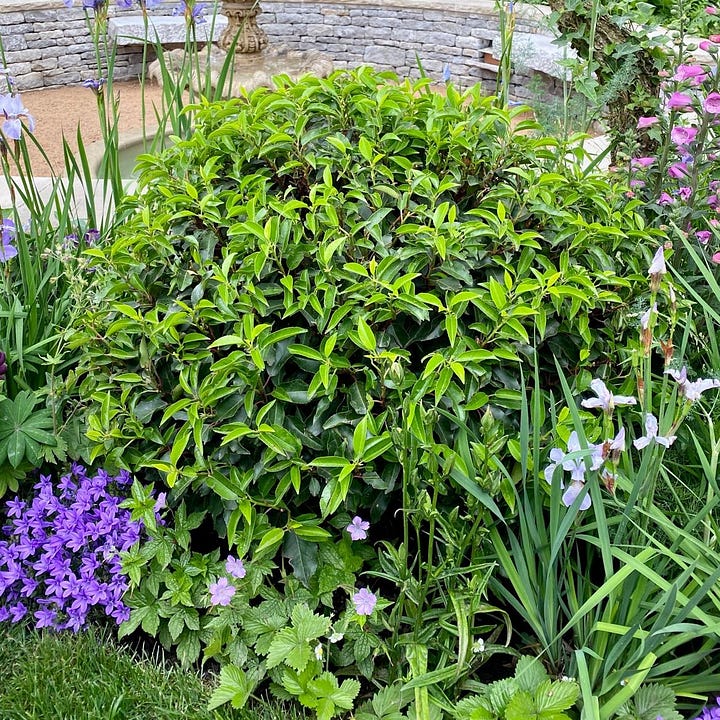
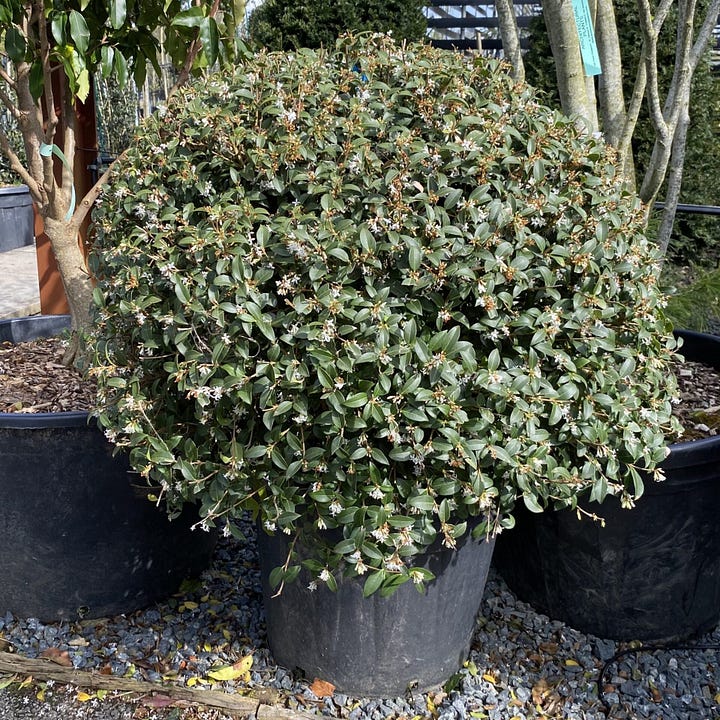
5. PRUNUS LUSITANICA MYRTIFOLIA (PORTUGUESE LAUREL)
Something a little looser. The leaves on this are mid-sized so it is an excellent choice for larger topiary. The foliage is considerably smaller than the species Prunus lusitanica, darker and the new shoots are a reddish colour. Spikes of small white flowers develop in the late spring and early summer, but these are often clipped off while the plant is being shaped. It is a pretty robust and tolerant plant, happy in most soils and conditions though as with any plant, will be more open structured in shadier positions.
6. OSMANTHUS X BURKWOODII
Alovely little shrub, (well, untouched it could grow into a 6m tree,) but it clips really well; so perfect for a little multistemmed tree with a raised crown as a stand out feature or clipped into balls for one of our blobbery designs. The leaves are small, slightly leathery and dark and it has small delicate white scented flowers in the spring. They’re enchanting in contrast to the more coriaceous leafy foliage.

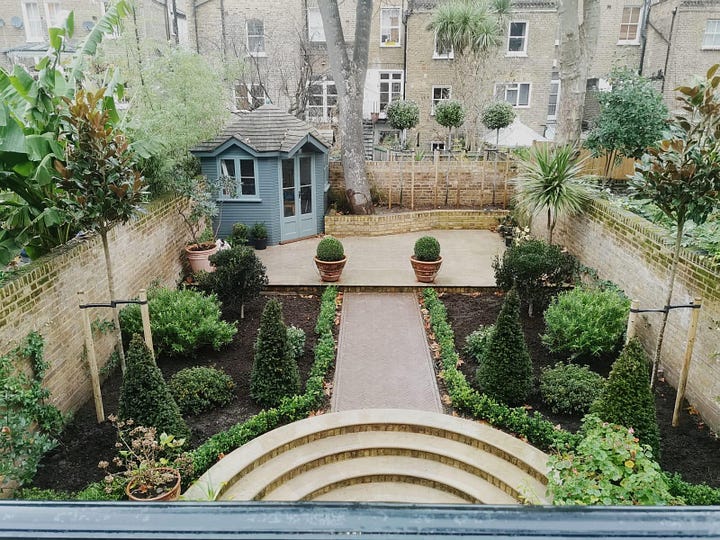
7. EUONYMUS MICROPHYLLUS
This is a perfect suggestion for those short hedges used to delineate and edge borders.
Even grown as a loose shrub, it will only reach about a metre high. The leaves are small with slightly serrated edges and the new growth is a delightful bright green.
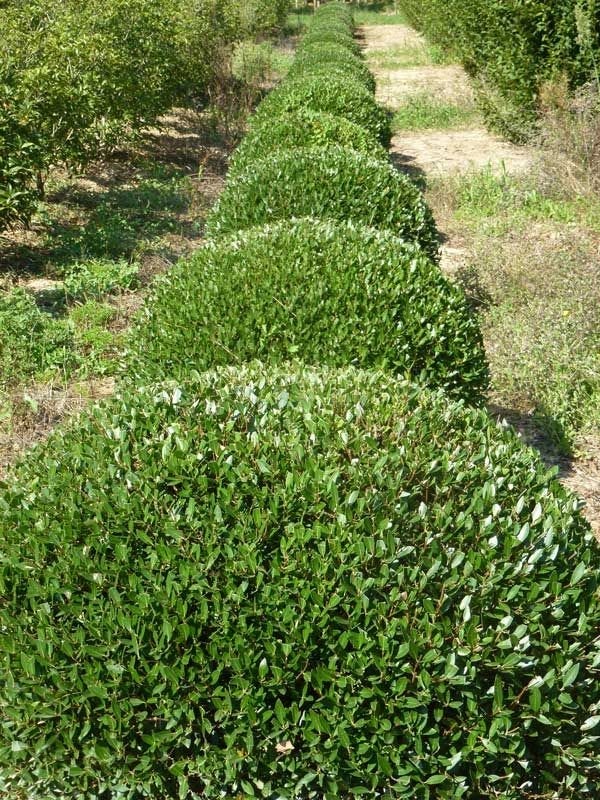
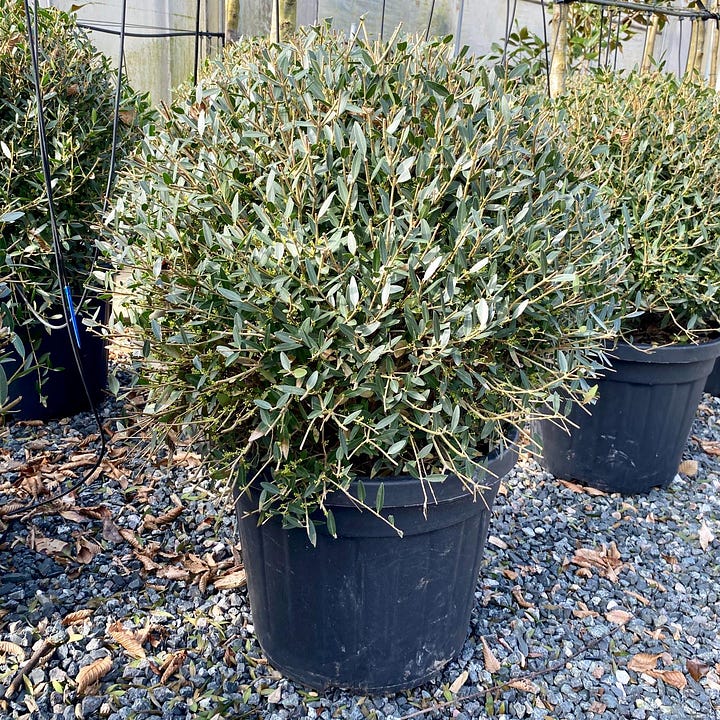
8. PHILLYREA ANGUSTIFOLIA - Wild Olive
This is a tough as old boots evergreen for topiary. The more you clip it the better it looks. It has narrow, evergreen leaves and masses of small, scented flowers. Place in full sun for best results, but ok in light shade, in moist but well-drained soil. It is salt tolerant so will be good for coastal gardens.
Thank you to Architectural Plants for this fascinating insight. Please do leave a heart ♥️, a restack (that’s the recycle symbol below) and/or a comment. It makes the most enormous difference and only takes a second. Thank you.





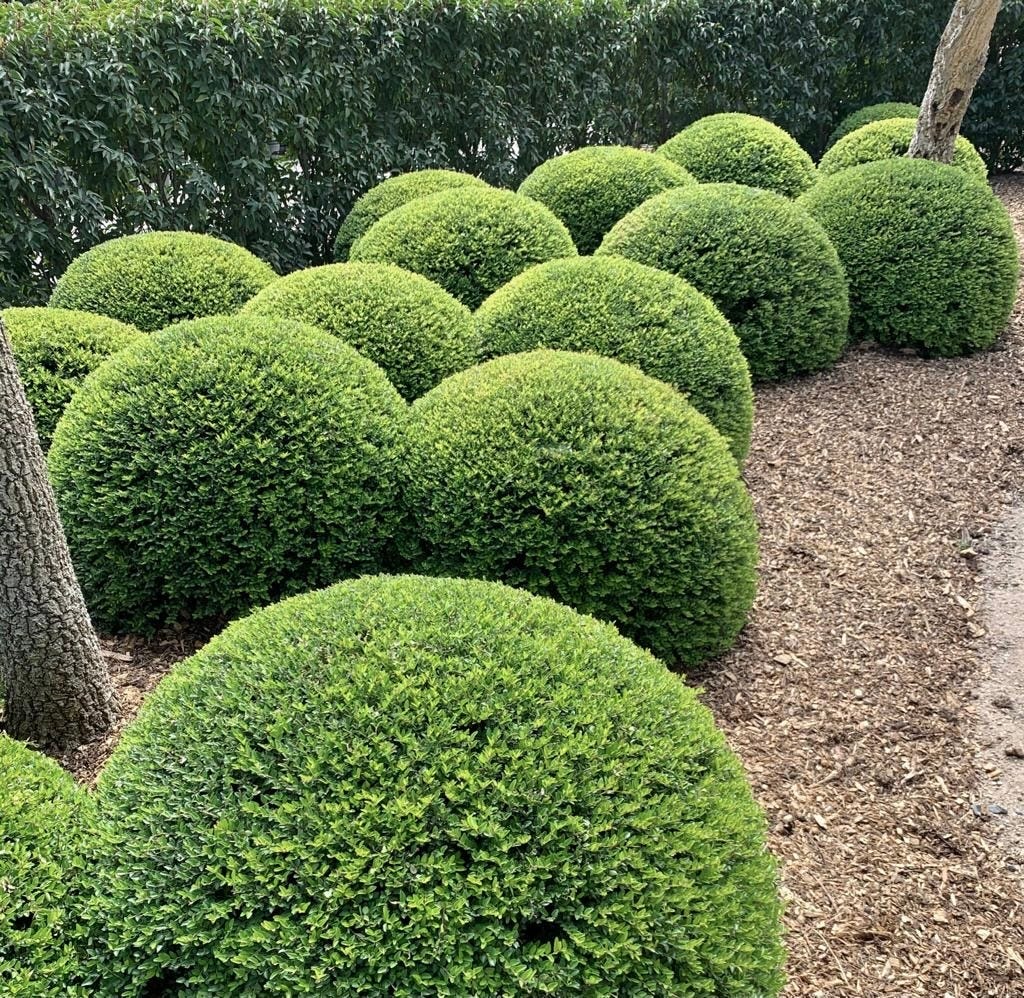

Excellent choices here, JP, thank you.
I can vouch for Euonymous japonica "Jean Hughes" which is being used to replace the lost buxus in my mum's garden.
I've planted Prunus lusitanica mophead standards and balls in a client's garden and it is a stunning evergreen.
Phyllerea is a very underused plant in gardens, (wonder why?) be it for topiary or other.
Ilex crenata was always prohibitably expensive so I've never opted for it. And very slow, though beautiful.
This is such a detailed post and worth saving for reminding.
My favourite of all these perennials, though, is the very lush, architectural "Guy Watts" variety.
(In your dreams, girl!😅)
Happy Wednesday, JP!
Super-useful JP! This is going to be a good aide-memoire for everyone looking for structure in shade.
I can vouch for them, having used all these and can vouch for their performance - ilex crenata can be slow, but worth the wait as long as you don’t mind doing so! Lonicera nitida is fab for what I call ‘wibbly’ low hedging - I’ve just used it in a garden which needed to withstand two young footballers, and it’s working a treat! Taxus always looks elegant - I do find will turn up its toes if it gets soggy, so excellent drainage is definitely key.